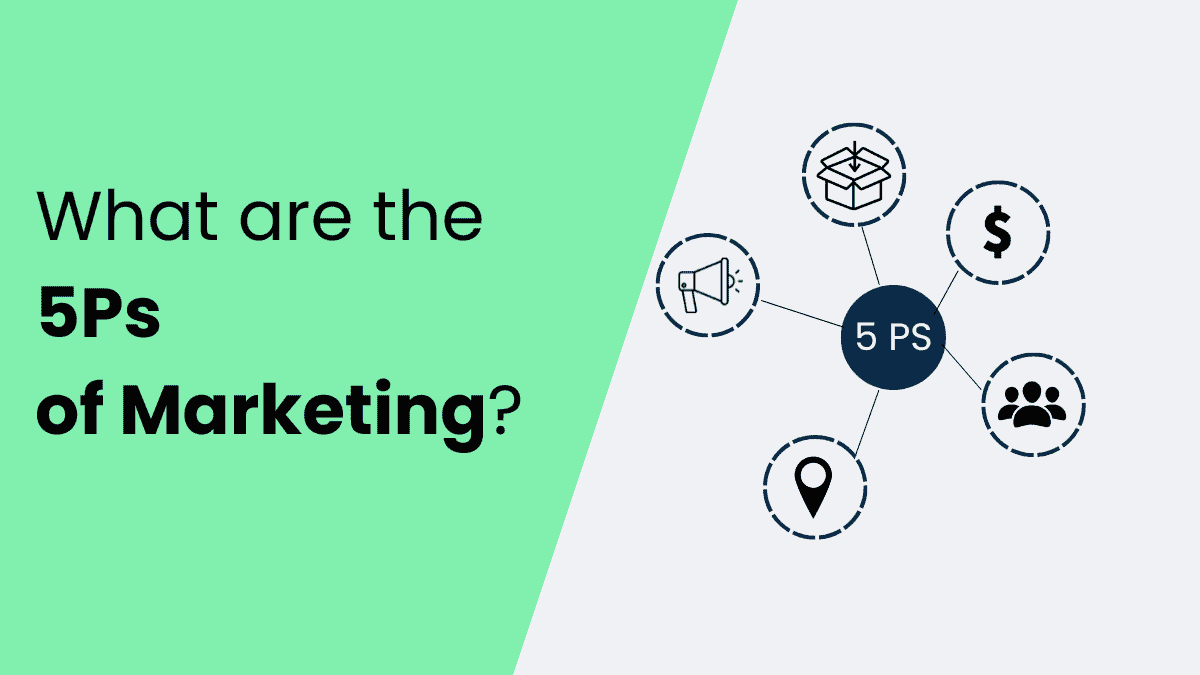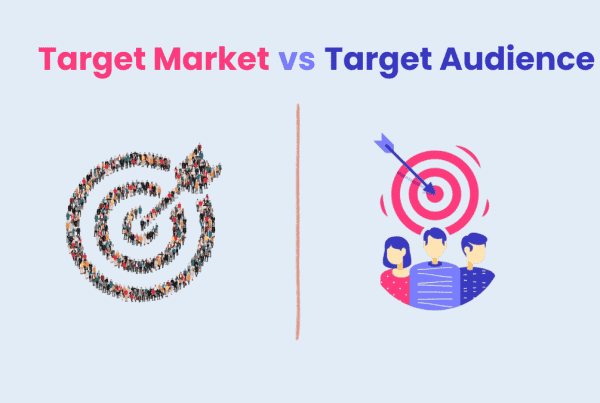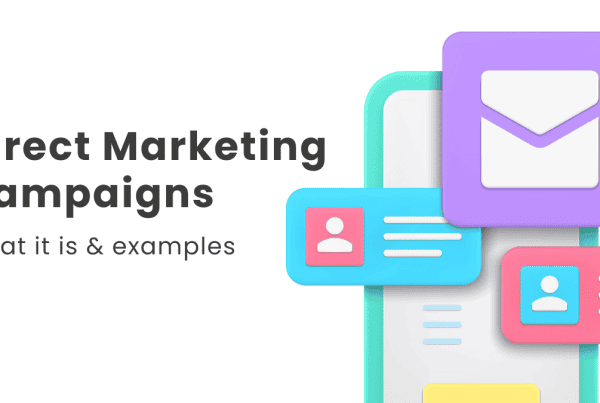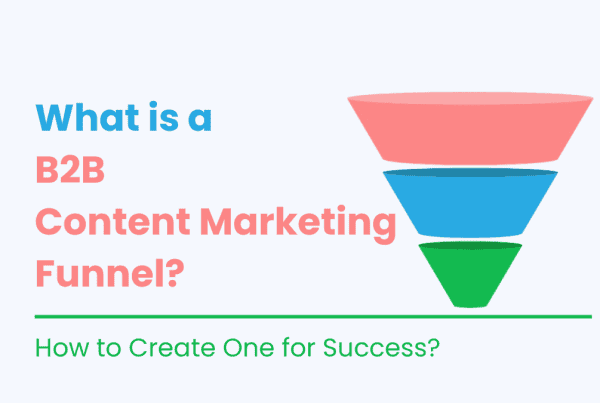
Marketing is essential for every business, it is like crafting the perfect recipe – every ingredient has its value and role in achieving the best taste.
Similarly, do you want to know what it takes to create a great marketing strategy? The answer is the 5 Ps of the marketing mix. It is a proven formula that helps businesses stand out, make better decisions, and engage effectively with their target audiences.
The idea of the marketing mix dates back to 1948 when Prof. James Culliton described marketers as “mixers of ingredients,” laying the foundation for this concept. In the 1960s, E. Jerome McCarthy introduced the original four Ps, which later evolved into the five Ps we use today: product, price, promotion, place, and people.
These five elements help businesses and marketers focus on meeting customer needs, delivering value, and growing their business. Are you curious to see how these Ps can shape your strategy? Let’s explore!
What are the 5 Ps of marketing?
The 5 Ps of Marketing (Product, Price, Place, Promotion, and People) are essential components that enable organizations to promote their goods and services effectively. Known as the “marketing mix,” these five elements enable businesses to meet client needs, provide value to their products or services, and differentiate themselves from competitors. Let’s break down each element:
![[your-subject] - EyeUniversal Marketing Mix](https://www.eyeuniversal.com/wp-content/uploads/2024/12/AD_4nXdgPned24PYQe30CqyTOIgeoczn643hh7qPwJ1OcuB7LhqlfcpPrLT08RpgBzZNCd2s4p6FFjfkLtFxkKavYwv0uDK2RztoyWit4C68z42CsWLNKX0E9EMenvhq3-BpOiDvyEmAmA.png)
Product
The product refers to what a company provides, whether it is a physical thing or a service. It covers features, design, quality, packaging, branding, and the benefits it offers to buyers.
The goal is to build a product that fits client wants while providing distinctive value that sets it apart from the competition. A brand may focus on high quality, unique design, or great customer service to differentiate its goods.
According to a survey from McKinsey & Co., around 89% of buyers care most about product quality when choosing what to buy. A good product often makes the rest of the marketing strategy easier.
Modern marketing methods sometimes involve tweaking the product based on user input. For example, apps like Slack implemented built-in video calling to meet user demand for ease, removing the need to switch between platforms.
Price
The same survey report also states that around 84% of people care about the price. Here, price is the amount customers pay for a product or service. It involves more than just setting a price, it also includes discounts, payment terms, and special offers.
When pricing, businesses must balance affordability for customers with profitability. Factors such as competitor pricing, production costs, customer buying power, and market conditions play a key role.
For example, a luxury brand might set a high price to signal exclusivity, while a budget-friendly brand may use low pricing to attract price-sensitive customers.
Companies also use psychological pricing techniques, like offering larger quantities for a slight increase in cost, to attract buyers.
Place
Place refers to where and how customers can access your product or service. It includes distribution channels, logistics, and ensuring that products are available at the right time and location.
At present, various options are available for businesses and customers. A company might sell its products through e-commerce platforms, retail stores, or direct-to-consumer models. The aim is to make purchasing convenient for customers, whether it’s offering fast shipping, a store nearby, or seamless online ordering.
The place where you are advertising your ads also matters a lot. Are you showing them where people are actively searching for something (like on Google) or where they are casually scrolling (like on social media)? Choosing the right place increases the chances of catching people’s attention and boosting sales.
Promotion
Promotion covers all the strategies used to inform and persuade customers to buy a product or service. It includes advertising, social media campaigns, influencer partnerships, email marketing, and public relations.
The objective is to create awareness, build interest, and drive purchases. For example, a company might launch a social media campaign with discounts to attract new customers or collaborate with a celebrity to boost brand recognition.
Promotions should align with a brand’s image and target audience, ensuring that every effort supports the overall marketing strategy.
People
“People” in business refers to both your team and your customers. A business succeeds when it builds strong relationships with employees, customers, and partners.
Employees are crucial for delivering high-quality products and services. Training and supporting them helps improve their work, which leads to happier customers. On the other hand, understanding what customers want and listening to their feedback lets businesses improve their products and solve issues quickly.
For example, if a customer reports a problem with a product, fixing it quickly shows you care. This not only keeps the customer loyal but also boosts your brand’s reputation. In the end, the success of any business depends on its people—both employees and customers.
There are other Ps in marketing mix
Depending on the type of business you have, you might need to add extra Ps to address all important areas of your operations. Here are some additional Ps that can strengthen your marketing strategy:
Process
This is about how you get your product or service to the customer. It includes everything you do, from designing and producing your product to delivering it and interacting with customers.
Why it matters: A smooth process helps you reach your customers efficiently and gives them a better experience.
Physical Evidence
This refers to anything customers can see, touch, or receive as proof of your service or product’s value.
Examples: It could be a physical item like a phone or even a digital product like an app.
Why it matters: It reassures customers they’re getting real value.
Partners
Partners include anyone who helps your business succeed, like distributors, collaborators, or suppliers.
Good partnerships expand your reach, improve customer service, and grow your business.
Payment
Payment is about how your customers pay for your products, whether through cash, credit cards, or online systems.
Why it matters: Offering convenient payment options makes it easier for customers to buy from you and improves their experience.
Packaging
This is how your product or service looks when presented to customers. It’s not just the box; it’s the whole presentation.
Eye-catching packaging builds your brand image, grabs attention, and helps your product stand out.
Perception
Perception is about how people think and feel about your brand. By understanding how customers see you, you can improve your reputation, gain trust, and create a better experience for them.
These extra Ps help cover more areas of your business, making your marketing strategy stronger and more effective!
Why are the 5 Ps of marketing mix important to your digital strategy?
The 5 Ps of marketing are important for your digital strategy because they help you stay focused on your key marketing goals. They provide a clear structure and guide your efforts, ensuring that everything aligns with your overall objectives.
When you have these foundational elements in place, it becomes easier to spot areas that need improvement.
For example, if you need to make more sales, you might need to evaluate the pricing of your product or the effectiveness of your sales team. Similarly, if your new product isn’t getting good reviews, you might need to rethink its positioning or target market.
Overall, the 5 Ps act as a framework that helps keep your marketing strategy aligned with your goals, making it easier to address challenges and optimize your efforts.
5 real examples of the 5 Ps of marketing mix
Now that you know what the 5 Ps of marketing are and how they help businesses, let’s see how real brands use these principles to succeed.
Canva
Canva is a game-changing design platform that lets anyone create marketing materials, even without design experience. When it first started, Canva was free, but after it became popular, they added premium features for different business needs. By waiting until the product was fully accepted by users, Canva kept the pricing fair, offering great value.
What we learned: Canva made its product affordable and valuable before adding extra features.
Mercaris
Mercaris is a financial tech company that found a unique niche in the market. They focused on organic, non-GMO (non-profit organization focusing on genetically modified organisms), and sustainable farming, which helped them stand out. By serving a niche with fewer competitors, they created their own space in the market and made it harder for other companies to compete.
Mercaris focused on a unique niche to reduce competition.
Warby Parker
Warby Parker is an online brand that sells prescription glasses at a much lower price than many competitors—just $95 for frames. They set their prices based on what customers felt was affordable but still high-quality. This strategy helped them appear both affordable and premium at the same time.
Warby Parker found the right price to appeal to customers’ perception of quality.
Hu
Hu is a dessert brand that makes organic, additive-free treats. Instead of just selling online, Hu placed its products in popular retail stores like Whole Foods and Target. This helped them reach a wider audience, grow brand awareness, and boost sales.
Hu placed its organic products in major stores to reach more customers.
The Lip Bar
The Lip Bar is a vegan beauty brand that focuses on women of color and promotes its products through partnerships with influencers. The brand carefully selects partners who represent its values and target its audience on social media. By using the right platforms, The Lip Bar reached its audience effectively.
The Lip Bar used social media and influencers to connect with their target audience.
Conclusion
The 5 P’s are like a helpful checklist for building your marketing strategy. They give you a clear structure to follow and can guide you when you feel stuck or need new ideas. Both experienced marketers and beginners can use them to create strong strategies. As the business world changes, the 5 P’s can evolve too, and new elements may be added to keep up with the times.
FAQs
Why are the 5 Ps important?
They provide a clear framework that guides decisions and actions, ensuring all aspects of the marketing plan align with the company’s goals. By focusing on these core elements, businesses can target the right audience, set competitive prices, promote effectively, and ensure customer satisfaction.
How do companies use the marketing mix?
Companies use the marketing mix, or the 5 Ps, to develop and execute a strategy that meets their customers’ needs. They carefully consider each “P” to create the right product, set an appropriate price, choose the best distribution channels (place), use effective promotional tactics, and ensure they’re targeting the right people. This mix helps companies make decisions that attract and retain customers while staying competitive.



